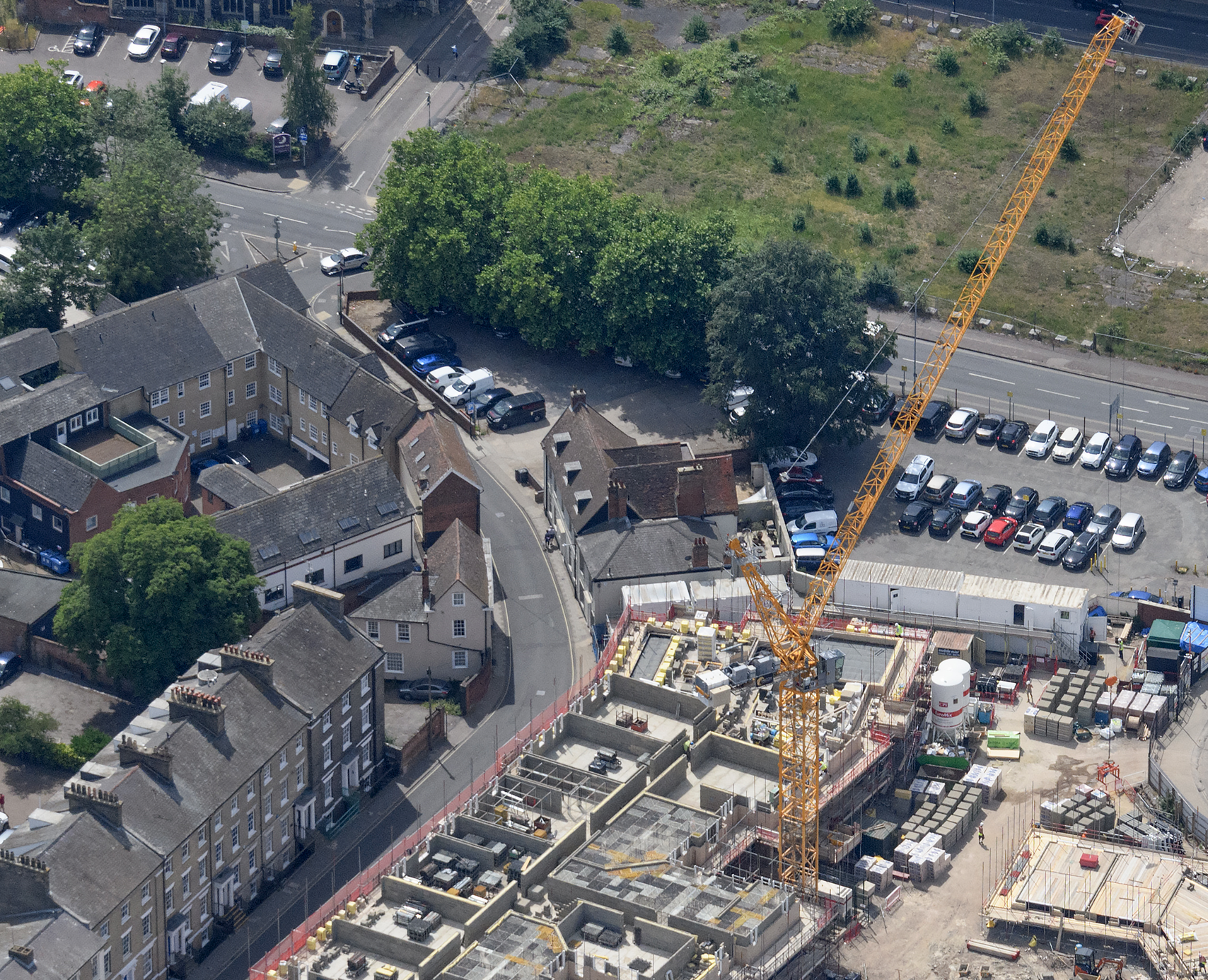
Development Sites
The preservation of trees and hedges near a property can greatly enhance its value and appeal for future developments.
If we are involved early, we can guide elements of the proposed design towards something acceptable by the Local Planning Authority, gaining planning consent with minimal conditions.
We can help you realise the potential of the site.
1. Tree Survey
Commission a Topographical Survey.
We undertake a BS 5837:2012 Tree Survey to plot trees and assess the health, condition and amenity value of trees on-site.
This is plotted on a technical drawing using AutoCAD.
2. Tree Constraints Assessment
Tree features (root protection areas, crown spreads etc.) are plotted in order to inform the site design layout - this will be plotted on a Tree Constraints Plan.
We then discuss any constraints or opportunities identified.
3. Aroboricultural Impact Assessment
We evaluate and report on the impact of the development on trees and the impact of retained trees after completion.
Tree removals, planning policy and mitigation measures required to reduce adverse impacts to local amenity.
4. Arboricultural Method Statement
We provide a clear and detailed Tree Protection Plan using AutoCAD. This will illustrate tree protection measures.
Written guidance specific to the site operations will be written in the report to ensure the safety of trees throughout the duration of the development.
We speak with relevant disciplines where necessary (e.g. engineers, SUDS etc.)
Our Process
-

Discuss
Send a quick email or call us. We'll happily provide a no-obligation quote.
-

Quote
If you're happy with the quote, reply and we’ll get started.
-

Site Visit
Once we receive the information, we'll schedule a site visit and get started.
-

Deliver
We’ll discuss findings, review constraints and opportunities, finalise and issue the report.
Request a Service
Leave your contact details and we will contact you shortly
Tree Survey
Tree Survey
Following receipt of a topographical plan, All Silva conducts BS5837 tree surveys with an unparalleled focus on detail, in strict adherence to the British Standard for trees in relation to construction. Essential for any development where trees are involved, our survey provides a thorough examination of tree health, species identification, and potential development impacts. We classify trees based on their quality and retention worth, giving you a clear roadmap for your project while safeguarding these natural resources. Our surveys aim not just for compliance but for a sustainable balance between development and the natural environment.
2. Tree Constraints Assessment
Understanding the tree constraints
At All Silva, we excel in pinpointing the constraints and opportunities presented by trees during development. Trees can pose both challenges and advantages. Our specialists outline constraints like root protection areas or canopy spread concerns and reveal opportunities for landscape enhancement or integrating trees into your design for ecological and visual benefits. By charting these aspects, we help you navigate around potential issues, transform limitations into design elements, and leverage the environmental and aesthetic value of trees, ensuring your project minimizes ecological impact while maximizing green space.
3. Arboricultural Impact Assessment
Assessing the impacts of the proposals
At All Silva, we produce comprehensive Arboricultural Impact Assessment reports to thoroughly evaluate the direct and indirect effects of your proposed design on existing trees. This assessment tackles conflicts such as canopy shading or intrusions into Root Protection Areas (RPAs). Our report suggests necessary tree removals, works, and mitigation planting, while also considering the influence of statutory designations like conservation areas and Tree Preservation Orders (TPOs). We analyse common site features to ensure your project's planning is both sustainable and compliant.
4. Arboricultural Method Statement
Why do I need an Arboricultural Method Statement
When intensive ground works near trees are involved, All Silva prepares an Arboricultural Method Statement (AMS) as requested by Local Planning Authorities. This document outlines construction methods to prevent tree damage or loss. By overlaying tree survey data with the proposed site plan, we create an AMS following BS 5837:2012 standards, detailing how development can proceed with minimal impact on retained trees. The AMS addresses:
Engineering solutions for construction near trees.
Removal and installation of structures and services.
Soil protection methods like no-dig technologies.
Management of hazardous materials and heavy machinery.
Installation of ground protection and specialist foundations.
Adjustments for ground level changes and material storage.
A Tree Protection Plan visually communicates these strategies, ensuring construction teams understand site constraints and tree protection measures. The AMS includes contact details for key project personnel, ensuring clear communication throughout the construction phase.

